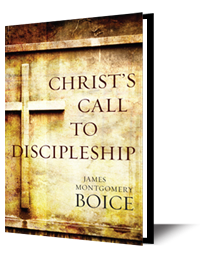Thursday: The Laws of Purification: Leviticus 1:1-24:23
Sermon: Leviticus: An Overview
Scripture: Leviticus 1:1-24:23
In this week’s lessons, we survey the major themes and principles of Leviticus.
Theme: The Laws of Purification
The headings of the New International Version probably give us the best outline for these laws of purification. The NIV’s editors do it in seven parts: five different sections and two repeats.
The first section is that of clean and unclean foods (Lev. 11). This distinction between clean and unclean animals goes all the way back to the flood, because the animals that came on board were identified as either clean or unclean. However, we weren’t told back then how they were distinguished. Now we are told. In addition to making this distinction between animals for health reasons, we can also see how this first section demonstrated the second explanation above, namely, as a way to separate God’s people from the world.
When we’re studying Leviticus we read through verses that don’t seem to mean much to us, and then suddenly a key verse jumps out. This happens in Leviticus 11:44-45, which says, “I am the LORD your God; consecrate yourselves and be holy, because I am holy…therefore be holy because I am holy.” This very sentence, or variations of it, occurs again and again throughout Leviticus, and is quoted in the New Testament by Peter in his first epistle: “for it is written, ‘Be holy, because I am holy’” (1:16). The way we relate to some of these purification laws has changed, but not the purpose behind them. We are still to be holy because God is holy.
The second section discusses purification after childbirth (Lev. 12). This has puzzled many people because they suppose it is teaching that sex or childbirth is sinful or unclean. Now, that’s not right. The Jews didn’t regard either one as sinful. Sex was created by God for pleasure and procreation, and children are called a gift from God. A woman who was able to bear many children was considered particularly blessed.
What makes the woman unclean in childbirth are the secretions that accompany and follow the birth, just as secretions of a different nature also defile the man as described in Leviticus 15. Thus, women were supposed to perform the laws for purification, which in this case was a very healthy precaution. In days before modern medicine, women who did not die during childbirth often died from what was then called “childbirth fever,” which was an infection following the birth. A time of isolation, rest, and cleansing was a wise precaution.
The third section deals with regulations about infectious skin diseases (Lev. 13:1-46; 14:1-32). The Hebrew word here is simply the word for “leprosy.” The NIV translates the word as “skin diseases,” probably because the regulations were meant for other skin diseases besides leprosy. What’s interesting in this section is that the priests apparently functioned as public health officers. They were responsible for the overall health of the community, and one thing they did was isolate (or quarantine) people when they had skin diseases. Now we don’t isolate people as much today because we have other ways of dealing with various infections. But in the past, if you had an infectious disease spreading among the people, the best thing you could possibly do was quarantine the people who had it. And that’s what the Israelites are told to do here. God’s revelation provided a way of containing these diseases, many of which were spread by contact.
The fourth section tells them how to treat mildew (Lev. 13:47-59; 14:33-57). The same word for what is translated as “mildew” is the word for infectious skin diseases. I don’t know whether the people could distinguish the one from the other. Mildew on the wall of a building or on clothing looks like the sort of thing you might see on your skin. The Israelites treated them similarly. They didn’t have penicillin or other antibiotics, and so they did the best they could. If it didn’t clear up by itself, they would burn the object, and in the case of the people they were quarantined.
The fifth section concerns discharges that cause uncleanness (Lev. 15). Two kinds of discharges are discussed at some length. One is pathological—the chapter doesn’t describe the specific diseases that are involved, but it might be venereal disease—and required a sin offering. The second type of discharges are sexual and doesn’t require a sin offering. Sex was not regarded as sinful, though there had to be purification.
This is the chapter that gives us the background to understand the story about the hemorrhaging woman in Mark 5:25-34. It explains her fear in the situation and also the magnitude of her faith. This woman had an emission of blood. This was one of the things that produced uncleanness, which meant that nobody could touch her, and she couldn’t touch anybody else. She has been unable to be cured of this malady for a long time. So when she sees Jesus going along through the crowd, she thought that if she could reach out and touch Him, it will produce cleansing. She can’t stop to ask Him to pay attention to her, but she reached out and touched the hem of His garment. It must have been with some fear and trepidation, because in touching Jesus’ garment she was breaking the law of Moses, making Jesus unclean.
When Jesus stopped dead in His tracks, turned around and asked who touched Him, she must have been scared to death. She had broken the law, and He is a Rabbi, a teacher of the law. She must have thought that He was going to condemn her, this unclean woman, for touching Him. This explains her fear, but at the same time it explains her faith. What she perceived is something that anybody who really understands who the Lord Jesus Christ is must perceive: when you come to Jesus Christ with your sin, your sin doesn’t make Him sinful; rather, it’s His holiness that purifies you. She thought to herself, “If I can just make contact with Jesus Christ, the power will go from Him to me, not the contamination from me to Him.” Jesus said that the woman had great faith, and she was healed from that very hour. No one who reaches out to Jesus Christ in faith ever fails to receive healing for his sin, his moral uncleanness.
Study Questions:
- List the first section of purification laws. Where do we first see this idea in Scripture, and what addition does Leviticus provide for our understanding?
- What key verse in Leviticus do we come across in today’s study? Determine to memorize it.
- What does the fifth section on purification deal with? How does it help us understand the story of Jesus and the woman in Mark 5:25-34?
Application: How is God calling you to be holy as He is holy? What in your life do you need to do more of, change, or stop?
Key Point: No one who reaches out to Jesus Christ in faith ever fails to receive healing for his sin, his moral uncleanness.
For Further Study: Download and listen for free to Philip Ryken’s message, “The Tabernacle of God.” (Discount will be applied at checkout.)
Think and Act Biblically from James Boice is a devotional of the Alliance of Confessing Evangelicals. It is supported only by its readers and gracious Christians like you. Please prayerfully consider supporting Think and Act Biblically and the mission of the Alliance.

















